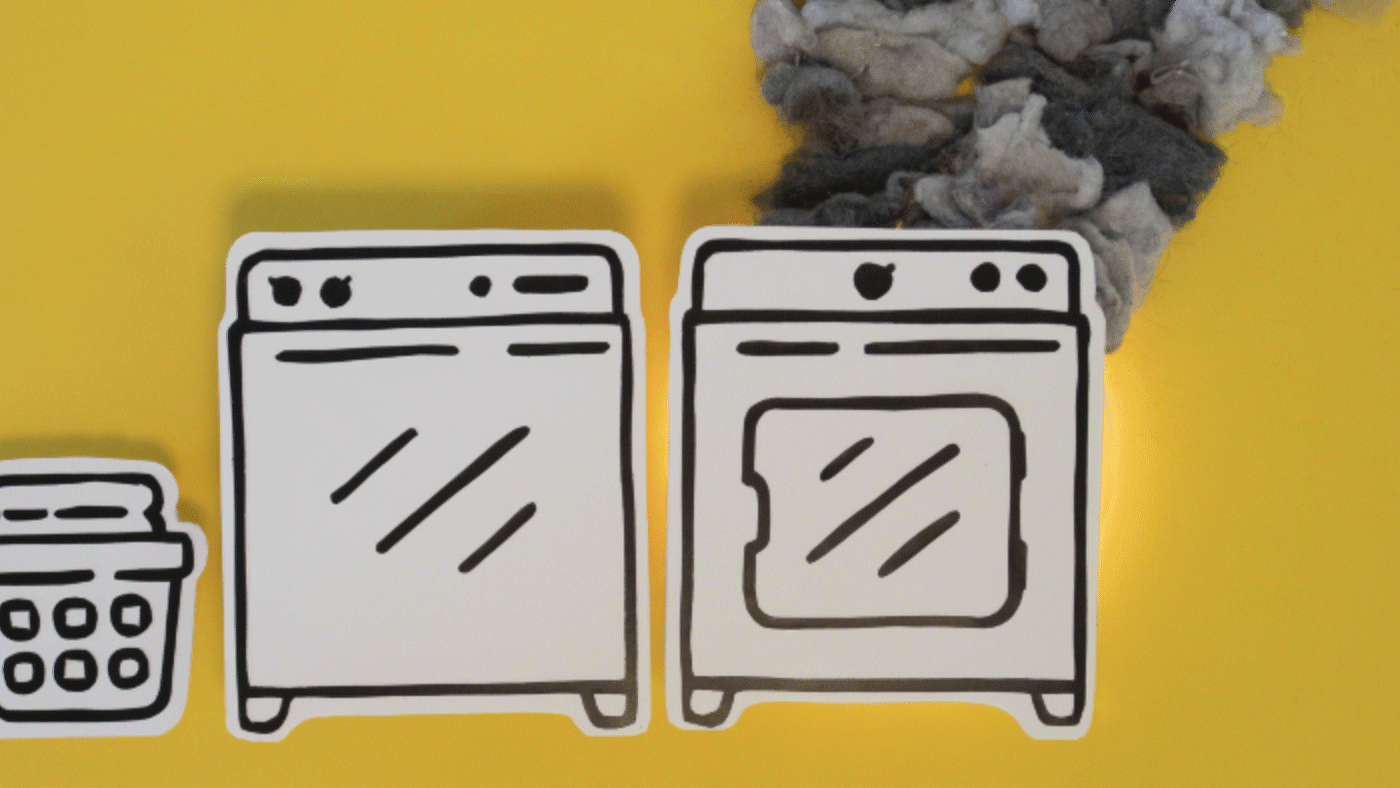The Ultimate Guide to Helping Prevent Dryer Fires
Load your dryer with laundry, not stress.

About 4 percent of home fires involve a clothes dryer or washing machine, according to the National Fire Protection Association. The leading cause of these fires? A failure to clean the appliances.
So before you take your next load of laundry for a spin, follow this guide to ensure your home is protected from potential dryer fires:
What causes dryer fires
As clothes dry, some fibers break free—creating flammable lint. While your dryer’s lint vent captures most of the material, some escapes, getting caught in the machinery or in the hose leading away from the dryer. As the lint builds up, it can prevent the hot air from escaping—making your dryer even hotter and potentially igniting the lint.
How to prevent dryer fires
With these six tips, you can help put out dryer fires before they even begin.
Have a pro install your dryer: Hiring a professional will help to ensure the correct electrical plug and outlet are used, and that the dryer is connected properly. Become familiar with the manufacturer’s instructions and warnings, too, as understanding how your appliance works will also help prevent dryer fires in your home.
Clean, clean, clean: Keeping things tidy is one of the best ways to help prevent dryer fires. Remove lint from the filter before and after each load of laundry, and clean it with a nylon brush every six months (or more often if it becomes clogged). Also clean the back of the dryer where lint can build up.
Pay attention to the pipe: Twice a year, clean lint from the exhaust duct that leads from the back of your dryer to the outside of your home. If it’s made of coiled-wire foil or plastic, replace it with a nonribbed metal duct that won’t kink or crush. Next, regularly check to ensure the outdoor vent covering opens when the dryer is on and that nests of small animals and insects are not blocking the vent.
Clear the area around your dryer: Nearby clutter could make the dryer hotter, and items that can burn when hot shouldn’t be on or near the dryer either.
Be aware of the items you’re drying: If your clothes have anything flammable like gasoline or cooking oil on them, wash them more than once and dry them outside or in a well-ventilated room. Also don’t use the dryer for anything with foam, rubber or plastic, such as a bathroom rug with a rubber backing.
Don’t run your dryer when you’re asleep or away: You want to be alert and nearby in case a dryer fire begins. And if you’ll be away for an extended time, unplug your dryer.
Signs your dryer has a problem
Just because you do everything right doesn’t mean issues like dryer fires won’t occur. Here are two signs that can help you spot one early:
- If your clothes are still damp at the end of a typical drying cycle, this may indicate that the lint screen or the exhaust duct is blocked.
- Check the outside dryer vent while the dryer is running. If you don’t feel air escaping, the vent or exhaust duct may be blocked.
What to expect if you experience a dryer fire
If your dryer catches on fire, immediately call 911 and leave the dryer door closed—opening the door will feed oxygen to the fire and you may risk burns and/or exposure to carbon monoxide. If the fire is severe, evacuate the home immediately and wait for help. If you stay, safely use a fire extinguisher to put out the fire by pointing it at the base of the fire and sweeping from side to side.
If you’re able to completely put out the fire, unplug the appliance—but only if you’re certain the connections are not damaged. Next, close the door to the room (or the nearest door, if the appliance is out in the open) to contain the dryer in case the fire reignites.
Damages caused by dryer fires can vary—from a simple cleanup to needing a specialist to make repairs or restorations. Be prepared by keeping a fire extinguisher accessible, and check your homeowner’s insurance policy to ensure fire and/or smoke damage is covered.